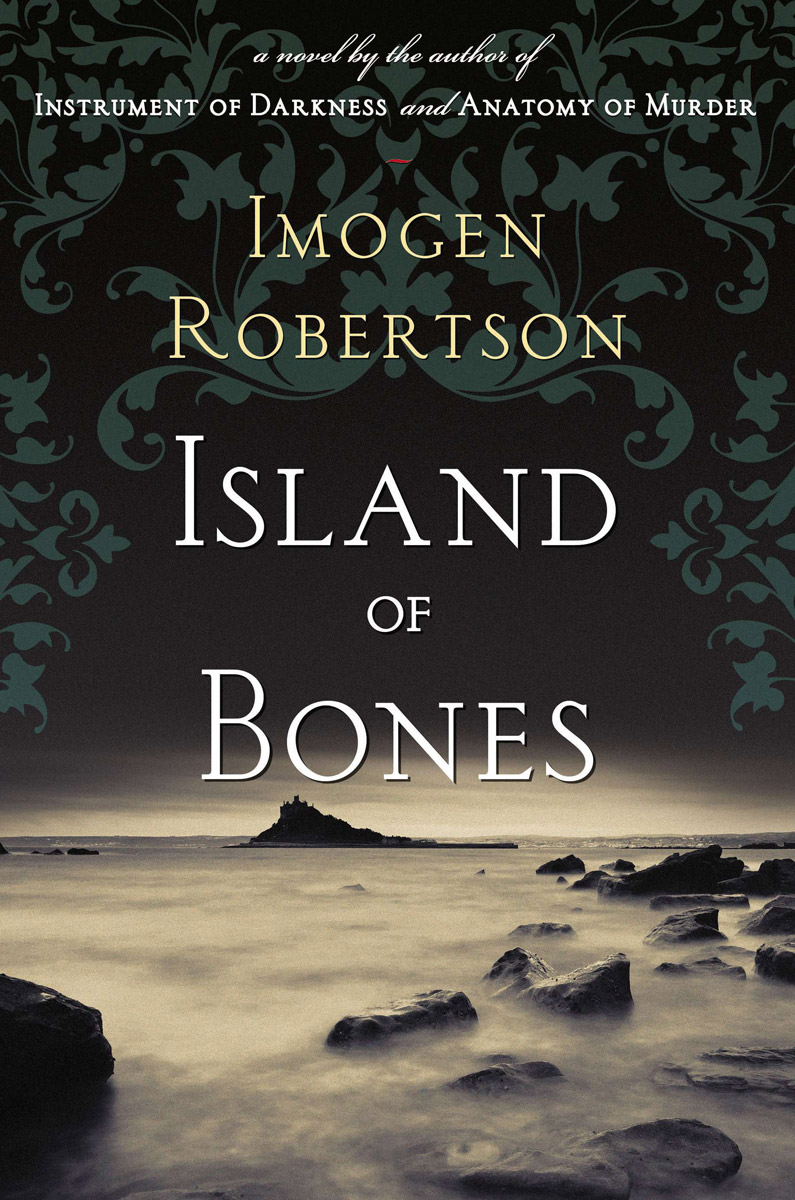
Island of Bones
Crowther and Westerman Series, Book 3
کتاب های مرتبط
- اطلاعات
- نقد و بررسی
- دیدگاه کاربران
نقد و بررسی

Starred review from August 20, 2012
Robertson's superior third historical featuring anatomist Gabriel Crowther and widow Harriet Westerman (after 2012's Anatomy of Murder) makes the most of its revelations about Crowther's backstory. The powerful opening, set in 1751 London, shows Crowther (whose real name is Charles Penhaligon) on the eve of his brother Adair's execution for the stabbing murder of their father. Despite his sibling's denials, Crowther cannot credit them, given the circumstancesâAdair was found with the fatal weapon in his hand and initially confessed. After the hanging, the action flashes forward to 1783 Cumberland, where an extra corpse has been found in a tomb on the Penhaligon family estate. That discovery comes to the attention of Crowther, who, in the interim, has studied anatomy abroad and tried unsuccessfully to live out his days as a recluse. His investigation into the cadaver's provenance turns up a wealth of secrets that may shed new light on his family's dark history. First-rate prose and the deepening relationship between the two leads bode well for the longevity of this series. Agent: Jason Bartholomew, Headline Publishing Group.

September 1, 2012
A historical fantasy set in England in the last quarter of the 18th century, this novel features the intrepid detective duo: pert widow Mrs. Harriet Westerman and severe Gabriel Crowther. This is Robertson's third Westerman/Crowther novel, and the second after Anatomy of Murder (2012) to appear in the U.S. this year. Obeying the conventions of the many genres increasingly conditioned by film, each section of the book notes the date, each chapter follows multiple stories simultaneously. The action takes place in a single week in the Lake Country in and around the town of Keswick. In the prologue, we read of the suitably melodramatic circumstances in which Gabriel renounced his name and title. Fast-forward 22 years: Crowther receives a letter from his sister, "the Vizegrafin Margret von Bolsenheim, is staying in our former home with her son as guests of the current owner. And they have found a body." So begins a journey for Crowther into his past, into the origin of his family wealth, and the fate of The Luck, "a jeweled cross" that disappeared in 1715. Westerman, her young son, Stephen, and his tutor, Mr. Quince, travel with Crowther to join his bitter sister and her spoiled son, Felix, to enjoy the Austen-esque hospitality of Silverside Hall. After determining the cause of the desiccated corpse's death, Crowther and Westerman turn their attention to the murder of a visiting Viennese gentleman. We learn that Hurst and his daughter, Sophia, have a claim on the feckless Felix, and suspicion falls on him--naturally. The local "cunning-man," a sort of white witch named Casper Grace, features prominently. The hooks of the elaborate plot points are checked in color-coded ink: the bad meet bad ends, the good are rewarded, the arrogant are wounded and see with new eyes. A sure hit for the audience of this CSI subgenre, the rest of us need not visit this Island.
COPYRIGHT(2012) Kirkus Reviews, ALL RIGHTS RESERVED.

September 1, 2012
On February 4, 1751, after his brother's execution, Charles Penhaligon should have become Lord Keswick. Instead he renounced the title, sold the family estate, and continued his studies at the College of Anatomy under the name Gabriel Crowther. But ties to his previous life are not completely severed. When the partially mummified remains of an unknown victim are found on Keswick lands, Crowther and Harriet Westerman, along with her son and his tutor, set off for the Lake Country, searching the present for clues to the past. For new readers, this third series entry (Instruments of Darkness; Anatomy of Murder) can be read alone; it balances revelations from Crowther's early life against the steady development of a well-constructed mystery. Elaborate details produce a strong sense of place, while thoughtful interior dialog and complex connections explore personal relationships. Multiple characters relate events from their perspective, allowing readers to see how various pieces fit together. VERDICT Set aside quality time to fully enjoy this richly layered, engaging historical series; a great suggestion for fans of Anne Perry, Charles Finch, and C.S. Harris. [See Prepub Alert, 7/5/12.]--Stacey Hayman, Rocky River P.L., OH
Copyright 2012 Library Journal, LLC Used with permission.

September 15, 2012
More than three decades after leaving his family estate in 1751 and taking a new name, anatomist Gabriel Crowther is backthanks to the discovery of a body. The corpse in question is found atop a fifteenth-century tomb being relocated, and Crowther, formerly Charles Penhaligon, Lord Keswick, returns to Cumberland, along with colleague Mrs. Harriet Westerman, to examine the remains. The venture also reunites him with the younger sister he sent away as a young child after their older brother was hanged for killing their father. As other murders ensue, Crowther must reexamine his family history as he seeks answers about killers past and present. The forthright Mrs. Westerman, still grieving 20 months after her husband's murder, is aided by her young son, Stephen, as she frequently cuts to the heart of matters. Local cunning man Casper Grace adds a touch of the supernatural to the political and familial intrigue. In the third entry in this series (after Anatomy of Murder, 2012), subplots can become confusing, but the well-drawn protagonists carry the day. An altogether satisfying historical mystery.(Reprinted with permission of Booklist, copyright 2012, American Library Association.)

























دیدگاه کاربران